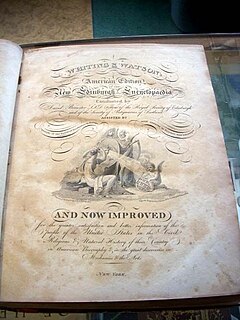
Richard Ford William Lambart, 7th Earl of Cavan, styled Viscount Kilcoursie from 1772 to 1778, was a British military commander throughout the Napoleonic era and beyond.

The New College at Hackney was a dissenting academy set up in Hackney in April 1786 by the social and political reformer Richard Price and others; Hackney at that time was a village on the outskirts of London, by Unitarians. It was in existence from 1786 to 1796. The writer William Hazlitt was among its pupils, sent aged 15 to prepare for the Unitarian ministry, and some of the best-known Dissenting intellectuals spent time on its staff.
Joseph Anstice was an English classical scholar, and for four years professor of classical literature in King's College London.
William Gretton (1736–1813), was the master of Magdalene College, Cambridge.
John Brewster (1753–1842) was an English author and clergyman.

Sir Ambrose Hardinge Giffard (1771–1827) was chief justice of British Ceylon.
(Walter) William Fell was an English writer.

Alexander Tilloch FSA (Scot) was a Scottish journalist and inventor. He founded the Philosophical Magazine.

The Edinburgh Encyclopædia is an encyclopaedia in 18 volumes, printed and published by William Blackwood and edited by David Brewster between 1808 and 1830. In competition with the Edinburgh-published Encyclopædia Britannica, the Edinburgh Encyclopædia is generally considered to be strongest on scientific topics, where many of the articles were written by the editor.
Henry Roscoe was an English barrister, legal writer, and biographer.

Joseph Gilbert (1779–1852) was an English Congregational minister.
Walter Thom (1770–1824) was a Scottish writer and journalist.

John Scott-Waring (1747–1819) was an English political agent of Warren Hastings, publicist and Member of Parliament.
John James Halls (1776–1853) was an English painter.
Richard Bellamy (1743?–1813) was an English bass singer. One of the chief bass singers of his day, Bellamy was appointed a gentleman of the Chapel Royal 28 March 1771, and a lay vicar of Westminster Abbey 1 Jan. 1773.
The Leith Station was a military unit of the British Navy administered by the Commander-in-Chief, Leith formally known as the Commander-in-Chief at Leith and on the Coast of Scotland from 1745 to 1825.







